
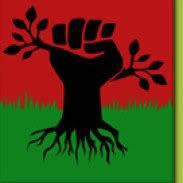
Shem Hotep ("I go in peace").

Christianity: Christendom
All of the research gathered on the very difficult subject of Christianity leads one to believe that the foundation of this religion had its origin in ancient Africa with the Twa people of Central Africa 40,000 years ago or longer. These ancient people embraced the same mythological story of a savior being crucified, as is the case of Joshua ben-Pendara, whose name was changed by the Greeks to Jesus Christ.
Joshua ben-Pendara or Jesus, was a native African who was educated in the Egyptian Mystery Schools according to the Mystery System. Moses was educated in the same schools, and in the same manner.
Research also concludes that the concept of Christianity is very similar, if not copied from the Egyptian Mystery System. According to the late A. Powell Davies,
"Originally, it was the earth itself that was the goddess, virginal again with every spring. Her son was the fruit of the earth, born only to die, and in dying, to be implanted once more in the earth, as the seed that would renew the cycle. This was the 'vegetation myth' from which the 'Savior-God' and the 'Mater Dolorosa' was drawn, soon to be elaborated.
The cycle of seasons on earth was viewed to be parallel with the coordinate cycle of the heavens. The concept of the Virgin goddess grew out of the constellation Virgo. Virgo rose in the eastern sky just when Sirius, the star from the east, was signaling the new birth of the Sun. The passage of the horizon line through Virgo was the conception of the Virgin from the Sun. The earth myth was thus blended with the sky myth and both with the memory of ancient heroes, real or legendary, and so came the saga of the Redeemer.
The cave, later to be associated with the birth of Jesus, was earlier the birthplace of Horus, who, when he was grown, would become Osiris, who must die for the salvation of his people. Isis was the Mater Dolorosa."
This ancient myth of the Africans was altered and officially was changed first by the Greeks, and later by the Romans who adopted the religion of the Africans and later changed it. This can best be described by what happened at the Nicene Council (in "Nice") which is now northwest Turkey.
The Nicene Council was held in 325 A.D., by Emperor Constantine to settle a dispute caused by the Arian views of the Trinity. Arius was a priest of Alexandria who believed that Christ is not of the same essence as God, but of similar substance. The Council adopted the so-called NICENE CREED, which declared that God and Christ as God are of one substance. The council also fixed the time of observing Easter, with a question of whether the Christian Easter should be on the same day as the Jewish Passover, or on Sunday. The Nicene Council is where African spirituality was altered to become an Arian religion, and later used to foster slavery and racism throughout the world.
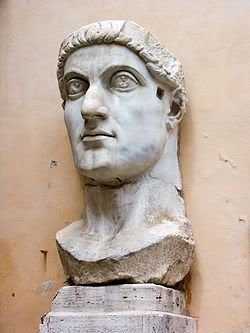
Constantine I Emperor of the Roman Empire (27 February 272 – 22 May 337)
Africans in the Roman Empire
Many people are not aware of the African influence on the Roman Empire, and the Roman Church. Christianity had become the "State" religion in Rome, African spirituality was completely suppressed and the "Isis Sect" (Osiris, the Father; Horus, the Son; Isis, the Mother of the Son) was no longer practiced openly.
As Christianity came into focus, three African Popes emerged in church history, Pope Victor I; Pope Militiades; and Pope Gelasius. Pope Victor I, came to power in 168 A.D., at a time when the date of Easter was very controversial. The fact that Easter Day is always celebrated on a Sunday is due to the decision of Pope Victor I, the fourteenth in line after Saint Peter. The second African pope was Militiades, a Black priest who was elected the thirty-seventh pope in 311 A.D. Militiades was the first pope to have an official residence. It was under Pope Militiades' reign that Constantine was converted to Christianity. A split came about in the church after Constantine began intervening in church affairs. Militiades died in 314 A.D. and was the last pope to be buried in the famous Catacombs.
The third African pope was Gelasius, who was born in Rome to African parents. He received a superior education. In his youth, Gelasius was a member of the Roman clergy. As pope Gelasius arranged several rules for the clergy, including allowing the use of wine at the Holy Communion.
Galasius has been recognized as one of the most vigorous, resourceful popes in the 5th Century. His writings and sermons have been quoted down through the ages. Gelasius composed many hymns. He also arranged a standard Mass book. Gelasius died in 496 A.D.
It has been said that Rome fell because she threw her doors too wide open by permitting Africans to become State and Church dignitaries. The reality of the fall of Rome is that Roman power weakened when the strength and efficiency of the Roman army deteriorated. The prevailing thought about Africans has been that it was only through the colonizing and Christianizing of Africans that they could hope to become civilized. The facts contained in the records of history, which may be examined, prove that Africans had highly developed civilized nations long before Europe or the Christian church was born. The church today, for example, continues to observe ancient Egyptian (African) practices without their knowledge.
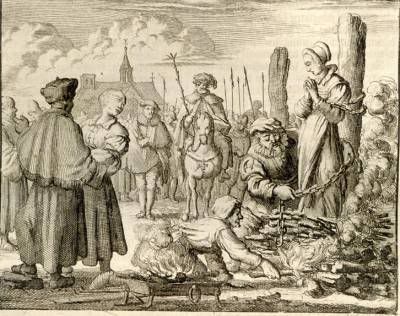
Spanish Inquisition
The Tribunal of the Holy Office of the Inquisition, commonly known as the Spanish Inquisition, was a tribunal established in 1478 by Catholic Monarchs Ferdinand II of Aragon and Isabella I of Castile. It was intended to maintain Catholic orthodoxy in their kingdoms, and to replace the medieval inquisition which was under papal control. The Inquisition worked in large part to ensure the orthodoxy of recent converts, especially those Jews, Muslims and others coerced on pain of death to adopt the Christian religion. Various motives have been proposed for the monarchs' decision to fund the Inquisition, such as increasing political authority, weakening opposition, suppressing conversos, and profiting from confiscation of the property of convicted heretics. The new body was under the direct control of the Spanish monarchy. It was not definitively abolished until 1834, during the reign of Isabella II.
Ferdinand II & V
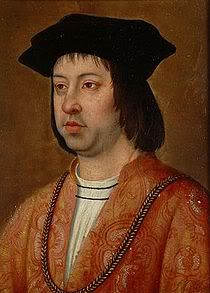
King of Aragon, Sicily, Naples, and Valencia.
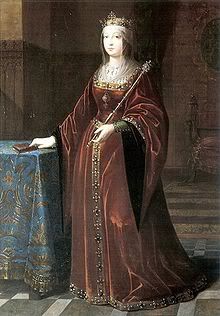
Isabella I of Castile.
Death tolls
The historian Hernando del Pulgar, contemporary of Ferdinand and Isabella, estimated that the Inquisition had burned at the stake 2,000 people and reconciled another 15,000 by 1490 (just one decade after the Inquisition began).
Modern historians have begun to study the documentary records of the Inquisition. The archives of the Suprema, today held by the National Historical Archive of Spain (Archivo Histórico Nacional), conserves the annual relations of all processes between 1540 and 1700. This material provides information on about 44,674 judgements, the latter studied by Gustav Henningsen and Jaime Contreras. These 44,674 cases include 826 executions in persona and 778 in effigie. This material, however, is far from being complete - for example, the tribunal of Cuenca is entirely omitted, because no relaciones de causas from this tribunal has been found, and significant gaps concern some other tribunals (e.g. Valladolid). Many more cases not reported to Suprema are known from the other sources (e.g. no relaciones de causas from Cuenca has been found, but its original records has been preserved), but were not included in Contreras-Hennigsen's statistics for the methodological reasons. William Monter estimates 1000 executions between 1530–1630 and 250 between 1630-1730.
The archives of the Suprema only provide information surrounding the processes prior to 1560. To study the processes themselves, it is necessary to examine the archives of the local tribunals; however, the majority have been lost to the devastation of war, the ravages of time or other events. Pierre Dedieu has studied those of Toledo, where 12,000 were judged for offences related to heresy. Ricardo García Cárcel has analyzed those of the tribunal of Valencia. These authors' investigations find that the Inquisition was most active in the period between 1480 and 1530, and that during this period the percentage condemned to death was much more significant than in the years studied by Henningsen and Contreras. Henry Kamen gives the number of about 2,000 executions in persona in the whole Spain up to 1530.
García Cárcel estimates that the total number processed by the Inquisition throughout its history was approximately 150,000. Applying the percentages of executions that appeared in the trials of 1560-1700—about 2%—the approximate total would be about 3,000 put to death. Nevertheless, very probably this total should be raised keeping in mind the data provided by Dedieu and García Cárcel for the tribunals of Toledo and Valencia, respectively. It is likely that the total would be between 3,000 and 5,000 executed.
However, it is impossible to determine the precision of this total, and owing to the gaps in documentation, it is unlikely that the exact number will ever be known.
Inquisition Torture

The Iron Maiden
The name of this instrument seems to have originated from a sort of sarcophagus that had the face of a maiden carved on its front door, probably with the aim of making this horrible container look more refined. The inside of the sarcophagus was fitted with spikes designed to pierce different parts of the body, but miss the vital organs, so that the victim was kept alive, in an upright position.
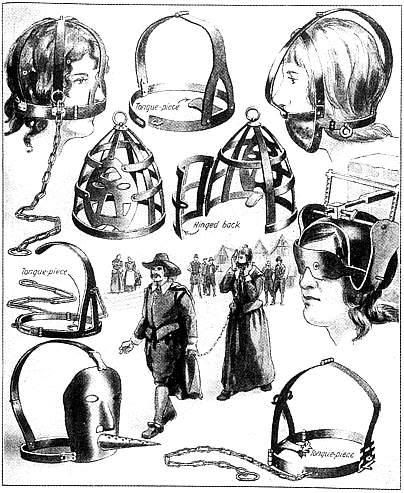

The Branks
The Branks, or Scold's Bridle, is a sort of metal gag, which was principally used on scolding housewives. It was typically fashioned as a cage that locked onto the head, aided by a metal protrusion that fit into the mouth. This tongue-piece was often enhanced with spikes or a rowel (small spiked wheel) to discourage attempts to speak. They appear to have originated in Scotland in the 16th century and passed from there to England and thence to the Americas, although there is some evidence that a type of branks may have been used even earlier
Some were also fitted with a chain to permit securing the wearer in a public place. Ancient houses in Congleton, Cheshire had a hook fixed beside the fireplace to which the town gaoler could fix the community bridle if the wife nagged too much.
Occasionally a bell on a spring was added to herald the approach of the wearer. An example of this type is on display in the Torture Chamber of the Tower of London.
Branks were also used to silence witches to prevent them from chanting or reciting their magic spells.
In the Americas, the brankswere a type of humiliation punishment, while in medieval Europe, they were used more as a torture device.

The Spanish Spider
This simple tool was used on victims either ice cold or red hot. The number of prongs differed; four to six being the most popular. A person was lifted in the air using the spider. The prongs were attached to any sensitive part of the body, but wouldn’t necessarily cause death.

The Chair
The victim was strapped in the chair using tight leather straps. The initial pain of hundreds of sharp rusty spikes penetrating the flesh could always be increased by the torturer forcibly pressing the prisoner down or back against the spikes. A modern variation would send electric current through the chair, and thusly the electric chair was born.
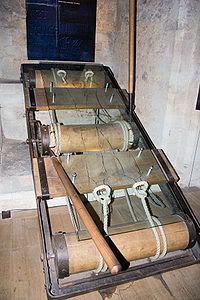
The Rack
The rack was a well used torture device during the inquisition that simply stretched a person out until he/she “confessed” or broke/split.

The Headcrusher
Headcrushers exerted tremendous force on the head by means of a screw. This could be used to force a confession or as a means of execution. Examples of headcrushers can be seen in the Tower of London.
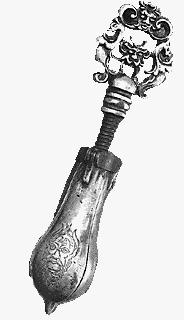
The Pear.
The pear was a well used torture device during the inquisition that simply was inserted in a person mouth, rectum, or vagaia and stretched until he/she “confessed” or broke/split.





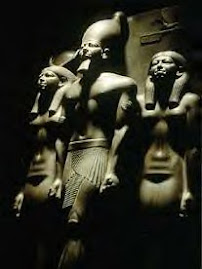









No comments:
Post a Comment